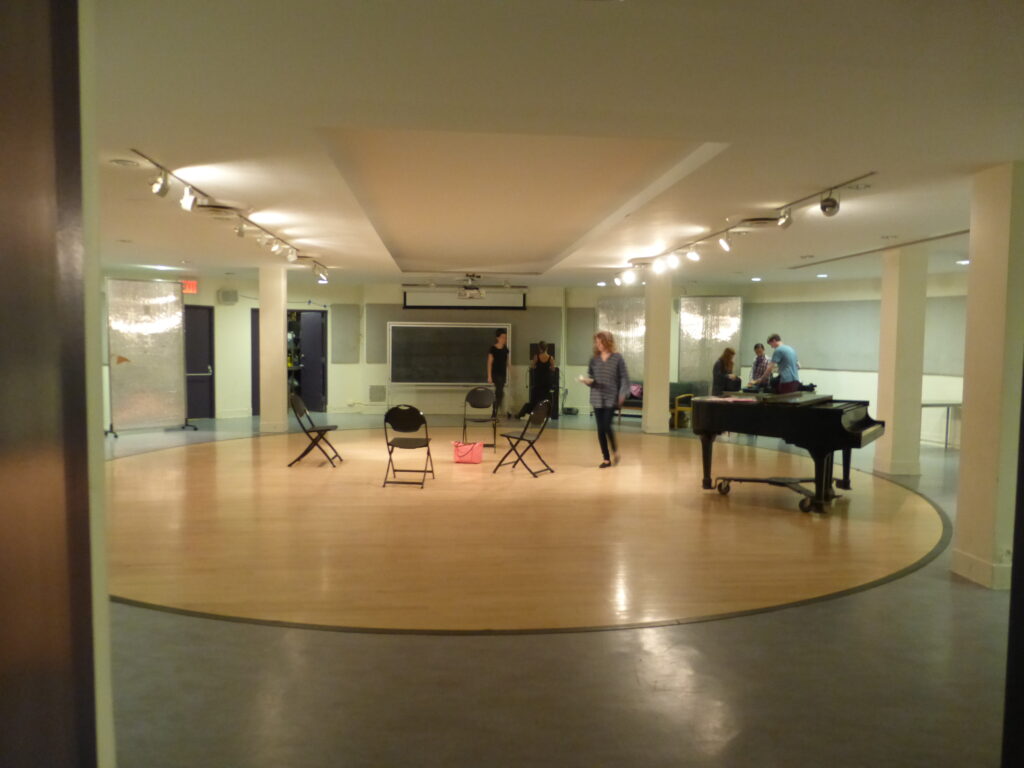
The studio at 66 West 12th Street is a funny place. It is hidden away in the basement of the building, forgotten by most, but very important to a select audience. It’s a round room with columns circling a supple wooden dance floor and dividing the room into two sections: creative space and preparation space. There is a rumor that it was designed specifically for Martha Graham and that she took one look at the space and refused to dance there. But it is the only dedicated movement space on the main campus, so for Lang, it’s all we’ve got. Every practice course in dance and theater is scheduled there; some students spend up to a third of their academic career in this one room.
What I love about the space is its intentionality. It folds into the design of the entire building, lending its circular structure to the auditorium above and the flow of the lobby and the courtyard. When it was created (long before my time) the walls were awash with color—deep blue, cobalt blue, citron, English vermilion, emerald green, and orange. The columns were brushed aluminum paint. Now the room, with the exception of the beautiful hue of the wood floor, is circled by grey padded boards, walls and columns awash with a flat eggshell hue.
A few years ago, when the New School was restoring Camilo Egas’ Harvest Festival, Ecuador, the curator mentioned that the piece had originally hung directly outside of the studio, from floor to ceiling allowing viewers to inspect it head-on. The painting’s sweeping design is structured in a pair of circles, the hats that serve as the focal point call to mind the columns in the room. It’s a complex piece, rich with intricate detail. I often find myself lost in it, finding a new person’s face or a new activity. It seems as if it were meant to be stared at for hours. I imagine, then as now, that there was a dedicated group of students who spent all of their time in the space. I like to think that the piece was positioned there to encourage depth, complexity, and whimsy in their work. However, when the piece was restored, it was not hung in its original placement, but moved to the lobby upstairs, high above a visitor’s gaze.
Is the room’s lack of rivals (in terms of movement appropriate space) a reflection of the university’s priorities, or a general disinterest from the culture at large?
For a space of creation, is the new, more economical, color scheme actually better? Could it be that its bland re-design allows for bolder ideas from the artists in the space—Or did the rich hues help inspire and drive the great pieces that were once created there?
Is the new placement of the Egas a statement of the importance of that particular piece, or a statement of concern in placing work so directly in front of this hidden, somewhat forgotten room?
The room’s original color scheme was shared in The Architectural Record, February, 1931 in an article written by Shepard Vogelgesang.
Jennifer Riegle
Staff, The Eugene Lang College The New School for Liberal Arts

